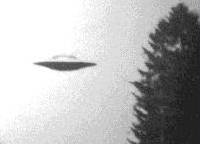Article/Document:
UFOs, Astrophysicists and the MIR Space Station
Rubén Sobrino, INEXPLICATA
original source | fair use notice
Summary: Aside from being an experienced webmaster for his own site, "Expedientes Secretos" and for Spain's highly popular "Mundo Misterioso", Rubén Sobrino is a noted ufologist and a member of SEIP-La Coruña. This is his first contribution to INEXPLICATA.
On January 16 of this year, almost all the newspapers in our country echoed the same remarkable news item from Moscow, carried by the prestigious EFE news agency.
The agency in question disclosed certain controversial statements made by Russian astrophysicist Boris Rodionov to Moscow's Komsomolskaya Pravda, in which he claimed to have proof of the existence of "a highly developed extraterrestrial civilization on one of the satellites of the planet Jupiter.
The astrophysicist also claimed that the enigmatic "flying saucer" phenomenon which has stimulated popular imagination worldwide could well be "outriders for this civilization."
Wielding a vast amount of scientific data and photographs transmitted by NASA's "Galileo" probe, Rodionov, a tenured professor of Microphysics and Cosmophysics of the State Institute of Physical Engineering, stated that Europa, smallest of Jupiter's four main satellites, "was inhabited by an ancient and technologically advanced civilization." Through the use of a high-powered computer and sophisticated photographic analysis technology, the scientist managed to obtain a close-up with a record-breaking resolution of nine kilometers from the satellite's surface, enabling him to make out the contours of what he calls pipes, tunnels and spherical domes. The photo clearly shows--according to Rodionov--that the lines formerly considered as mere fissures by the scientific community actually cross over each other like a knot of expressways.
According to Rodionov, the variety of "pipelines" and "tunnels", having a diameter similar to the "Chunnel" that crosses the English Channel, is surprising. "There are 100 kilometer segments, as well as other pipelines having immense junctures or orifices between them."
Anyone may join the controversy, since the image in which Rodionov claims to see the aforementioned pipelines and tunnels is available to anyone having Internet access and a simple photo retouching program capable of analyzing it. This photo, which is available from the NASA/JPL net server that provides images for the "Galileo" mission, in fact portrays a number of lines (fissures, in fact) which cross each other but never at different elevations, as the scientist has claimed. Having a width of 20 to 40 kilometers and thousands of kilometers in length, it is believed that the fissures are attributable to a period of global expansion on Europa, caused by volcanic eruptions or geysers under its frosty surface, creating a series of fractures on the ice crust.
This news item would not go beyond being an amusing anecdote, were it not for the fact that it is the first time that a person related to the armed forces or the Russian Space Agency made similar statements to the press.
On December 23, 1998, another news item pertaining to the UFO phenomenon appeared in a number of papers. As with the preceding one, it also came from Moscow, but in this event, the source was cosmonaut Alexandr Baladin.
Baladin stated that "flying saucers" have come into close proximity to the MIR space station as well as the Baikonur Cosmodrome, further adding there is sufficient evidence in existence to warrant a scientific study of the phenomenon, and that it is time that world governments officially acknowledge the UFO phenomenon's existence.
"General Vladimir Ivanov, former commander of Russia's Military Space Forces, recalls that three objects flew at a considerable altitude over the Baikonur Cosmodrome and were picked up on radar. There is no way they could have been airplanes." insisted the cosmonaut.
Baladin also disclosed at Brazil's First International Ufology Forum that he himself had been the protagonist of a disturbing experience (along with fellow cosmonaut Musa Manarov) during his second space mission. While the docking operations between his space capsule and MIR were underway, Baladin became aware of a glowing object gyrating a short distance away.
Manarov managed to capture the strange phenomenon on videotape, which was also shown during the UFO congress in question. Baladin claimed that the recording, along with other evidence presented during the Congress, "must be studied by an international scientific commission."
Baladin insisted that the Russian military has a great contribution to make to UFO research, giving as an example the multiple-witness case at the Kaputsin Yar missile base, whose personnel sighted a semi-circular object flying at low altitude and lighting up all of the base's depots and magazines with a powerful searchlight in June 1989. "Many of my old comrades, who are now working at top-secret military facilities, acknowledge having seen unidentified flying objects over manufacturing centers, gunnery ranges and military facilities."
In any event, Baladin made it clear that "not all that can be seen should be taken for a UFO, since it is very possible that we may be facing natural phenomena which have not been properly studied."
All of these explosive and unexpected statements should at least cause us to ask many questions about what is happening in the former USSR on the ufological level. Questions which shall invariably remain unanswered...or will they?
Read more articles on this topic:






